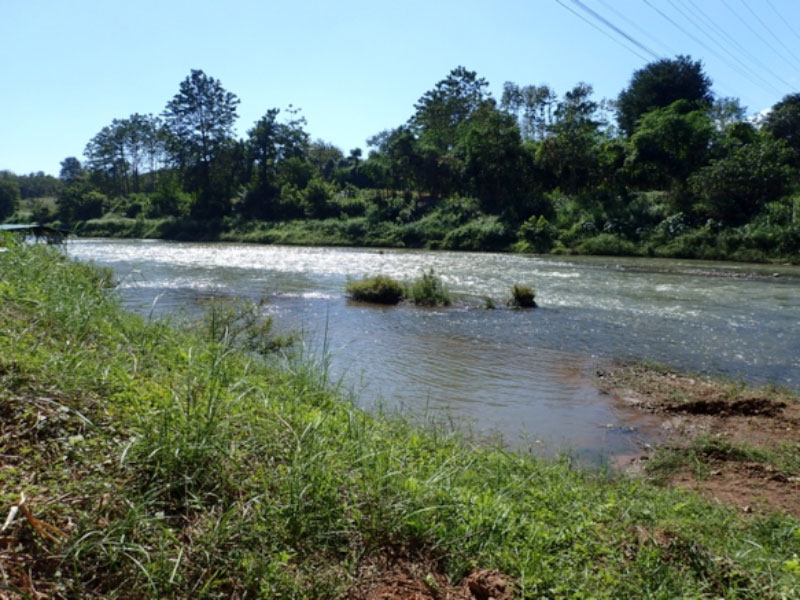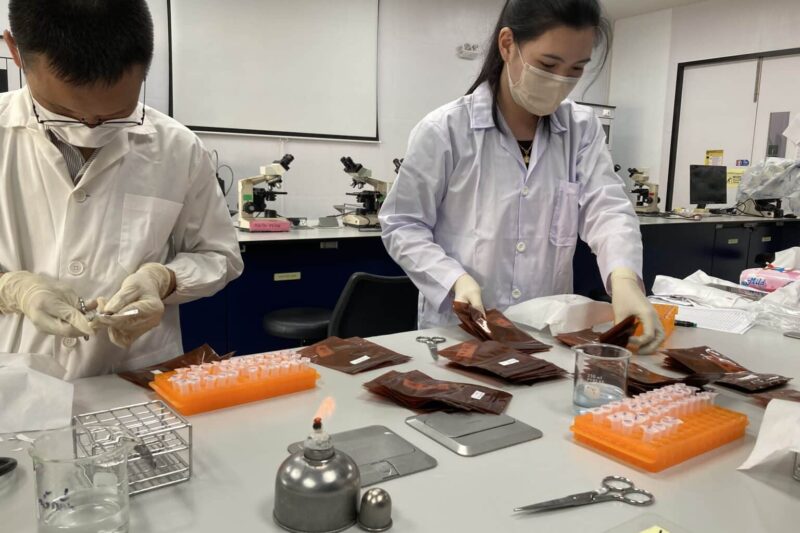Reviving Nan watershed areas through Chula’s interdisciplinary knowledge

Nan province is currently facing an environmental issue of chemical contamination in nature from the expansion of monoculture in forests and seasonal crop rotation in watershed areas which has led to the use of chemicals in large quantities. From the 2551BE Nan Department of Agriculture report, it was discovered that up to 1,172.7 tuns of agricultural chemicals are used per year with herbicide being the top chemical equaling to 92.04 percent. Although herbicide is able to decompose naturally, if some is left over the value of its half-life is 10 years. This would cause the ability to develop the environment in the area to decrease, having both short term and long-term effects including forest degradation issues, erosion of soil, floods that may wash agricultural chemicals into the river, pesticide residues in aquatic animal that are popular for consumption in the community such as field crabs, grass frogs, freshwater clams, and sea bass, which would consequently affect the health of people in the local community.
Chulalongkorn University via the Department of Biology, Faculty of Science and the Center of Learning for the Region have therefore initiated a Local Science Project which is a project according to the academic development plan of Chulalongkorn University since 2551BE. Created for researching and developing integrated management of local resources in the watershed areas of Nan River in the Nan province continuously until the great flood crisis in 2561BE which caused a considerable amount of damage in many areas within Nan province. This caused agricultural chemicals to be washed into a large amount of water sources which may have affected the biological resources in the area. The research faculty from Chulalongkorn University monitored and tested the quality of the water, silt, and soil alongside the diversity of living things which indicates to the quality of the environment, through the project “Monitoring and inspection of the environmental quality in the Nan alluvial plains and river branches” which is part of the “Rak Pa Nan” project in the Royal Initiative Project of the divine grace of H.R.H. Princess Maha Chakri Sirindhorn. The project was created to sustainably resolve the issue of degradation of forests in the Nan province by relying on the watershed areas of Nan in the geographical information system of the “Rak Pa Nan” project, which covers the areas of the Nan River and river branches from the source until the Sirikit dam within 15 districts. This led to the management of environment in the area so the community would be able to utilize their natural resources for safe consumption, through a 5 step process including 1) Recording physical factor data in the operating areas inclusive of temperature and relative humidity while also collecting samples of water, silt, and soil along the Nan river and its branches by relying on equipment and standard methods of the Pollution Control Department 2) Analyze weed killer contamination levels in water and soil samples, collect water samples from Nan river, river branches, and nearby reservoirs from 67 sample areas starting from September 2561BE – March 2562BE for the purpose of detecting Atrazine Glyphosate type herbicides and residues of paraquat through the enzyme-linked immunosorbent assay (ELISA) technique. It was found that they were able to use the ELISA technique to detect herbicides in 58 sample areas, which were at a relatively low rate and within the water quality standards for the protection of freshwater animals set out by the Department of Fisheries in the year 2530BE. Furthermore, water samples from 1 sample area found contaminations exceeding the standards for drinking water (3 micrograms/liter), which is not suitable for direct consumption. As for the silt and soil samples, they were dried then extracted to separate the herbicide into solution form, before testing for Atrazine Glyphosate type herbicides and paraquat residue through the use of the ELISA technique and analysis of soil particle ratios as well as organic content in the soil samples. 3) Investigate the diversity of small arthropods in the soil by taking soil field samples and putting them in Berlese-Tullgren funnel insect isolation equipment to separate samples of small arthropods in the soil and collect samples in 70 percent ethanol and test the diversity of small arthropods, especially groups of mites, to be used as an environmental indicator. 4) Evaluate the quality of the environment from the levels of herbicide contamination in various watershed areas by relying on the standards of the Pollution Control Department, Food and Agriculture Organization (FAO) 2549BE, and Health Canada’s Pest Management Regulatory Agency 2553BE. 5)Distribute information to farmer and youth representatives to exchange knowledge between researchers, Chulalongkorn University students, and the community as well as between members of the community itself, leading to the creation of networks between communities and jointly developing methods to manage environmental problems.

The dedicated research of Chulalongkorn University, in the name of a higher education institution that has continuously made visits to Nan province, has connected interdisciplinary knowledge to care for far away areas with a conscience to be a part of social responsibility, through research work and academic service as a leading cause. This has led to data sets regarding the quality of environment in the Nan river watershed areas and river branches, covering areas along the watershed of Nan river until the Sirikit dam, both in the rainy season and the drought season. Furthermore, leading to the plan management and cautious monitoring of environmental contaminants, creating farming alternatives with network partners, reducing the use of chemicals together with soil quality treatment using organic agriculture through the process of weed removal in agricultural spaces, without the use of herbicides in every procedure, conserving, safeguarding and protecting the environment.
Related articles:
Others
Elegant Island Escape
Charismatic Phra Chudadhuj Palace awaits visitors on Koh Si Chang





